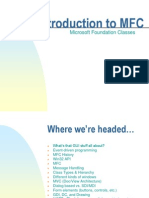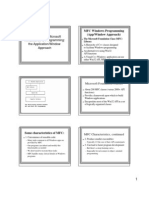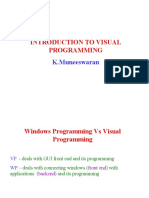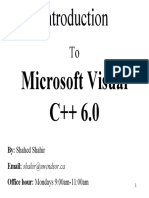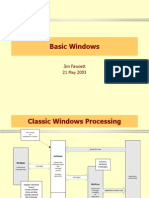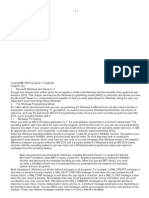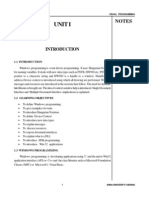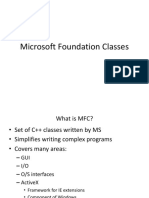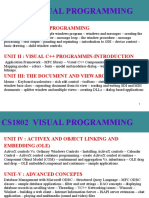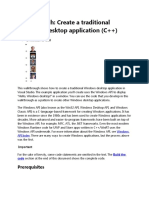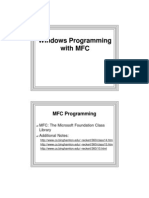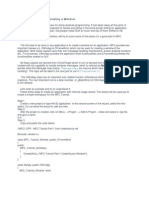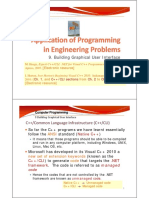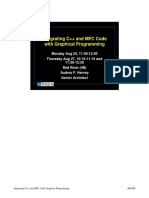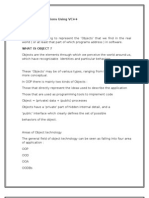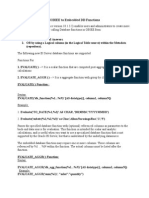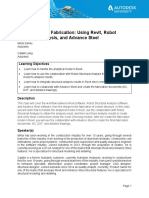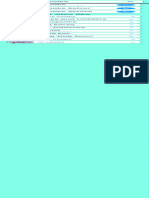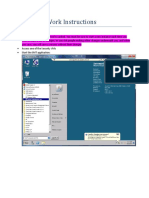0% found this document useful (0 votes)
87 views37 pages11 Introduction To MFC
The document discusses the goals and features of Microsoft Foundation Classes (MFC). MFC aims to simplify Windows application development by encapsulating the Windows API in classes and providing an application framework. This reduces the learning curve for developers familiar with Windows. MFC handles tasks like registering window classes and message routing behind the scenes. It also provides common classes for windows, documents, views and the application itself.
Uploaded by
rajivpoplaiCopyright
© Attribution Non-Commercial (BY-NC)
We take content rights seriously. If you suspect this is your content, claim it here.
Available Formats
Download as PPS, PDF, TXT or read online on Scribd
0% found this document useful (0 votes)
87 views37 pages11 Introduction To MFC
The document discusses the goals and features of Microsoft Foundation Classes (MFC). MFC aims to simplify Windows application development by encapsulating the Windows API in classes and providing an application framework. This reduces the learning curve for developers familiar with Windows. MFC handles tasks like registering window classes and message routing behind the scenes. It also provides common classes for windows, documents, views and the application itself.
Uploaded by
rajivpoplaiCopyright
© Attribution Non-Commercial (BY-NC)
We take content rights seriously. If you suspect this is your content, claim it here.
Available Formats
Download as PPS, PDF, TXT or read online on Scribd
/ 37


